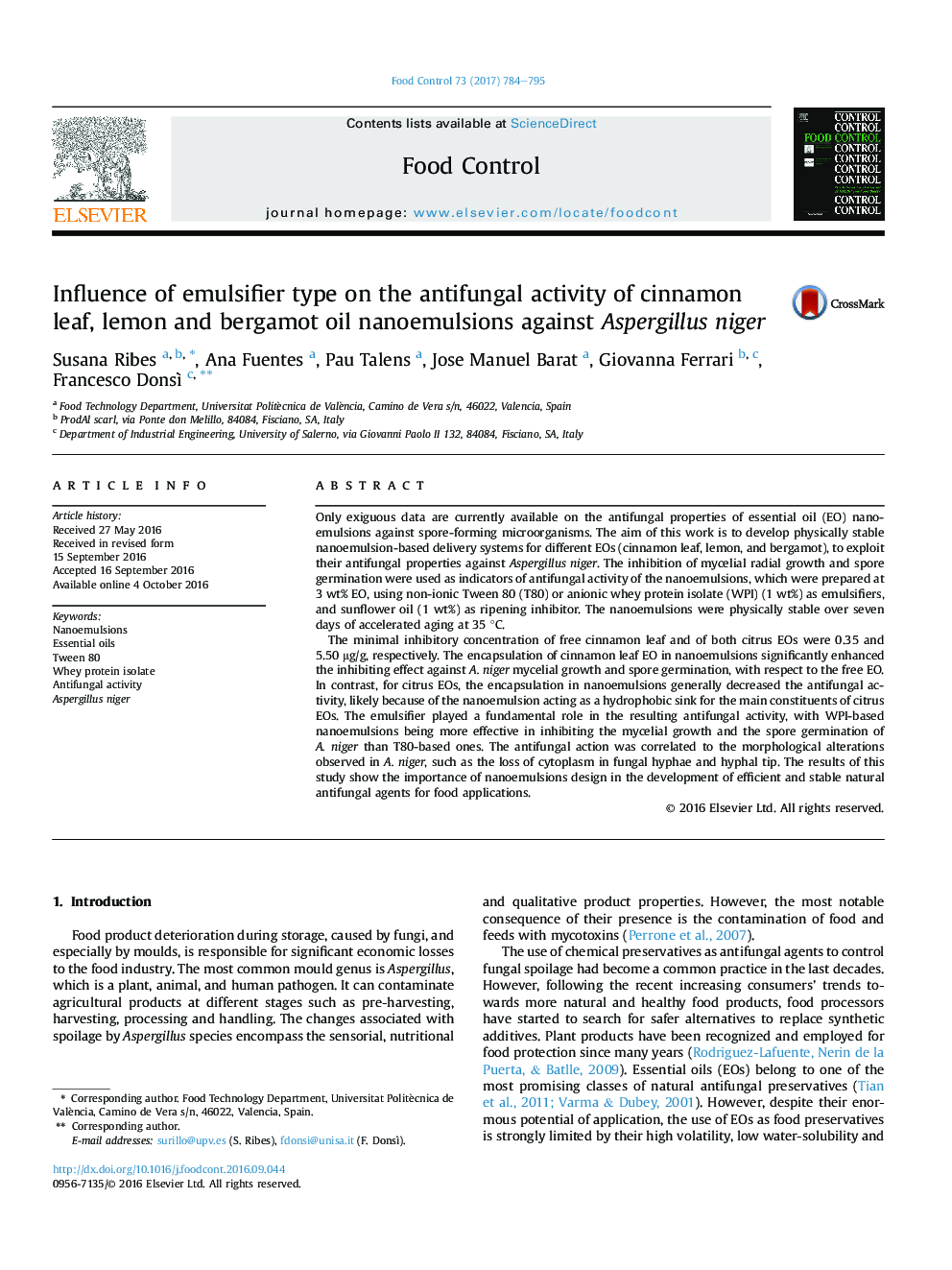| کد مقاله | کد نشریه | سال انتشار | مقاله انگلیسی | نسخه تمام متن |
|---|---|---|---|---|
| 5767707 | 1413202 | 2017 | 12 صفحه PDF | دانلود رایگان |
- Study of the effect of EO encapsulation on their antifungal action against A. niger.
- Cinnamon leaf EO nanoemulsions enhances the antifungal activity against A. niger.
- Citrus EOs encapsulation decreases the antifungal activity.
- The antifungal action is correlated to the morphological alterations of A. niger.
- Nanoemulsions enable the control of A. niger growth and spore germination.
Only exiguous data are currently available on the antifungal properties of essential oil (EO) nanoemulsions against spore-forming microorganisms. The aim of this work is to develop physically stable nanoemulsion-based delivery systems for different EOs (cinnamon leaf, lemon, and bergamot), to exploit their antifungal properties against Aspergillus niger. The inhibition of mycelial radial growth and spore germination were used as indicators of antifungal activity of the nanoemulsions, which were prepared at 3 wt% EO, using non-ionic Tween 80 (T80) or anionic whey protein isolate (WPI) (1 wt%) as emulsifiers, and sunflower oil (1 wt%) as ripening inhibitor. The nanoemulsions were physically stable over seven days of accelerated aging at 35 °C.The minimal inhibitory concentration of free cinnamon leaf and of both citrus EOs were 0.35 and 5.50 μg/g, respectively. The encapsulation of cinnamon leaf EO in nanoemulsions significantly enhanced the inhibiting effect against A. niger mycelial growth and spore germination, with respect to the free EO. In contrast, for citrus EOs, the encapsulation in nanoemulsions generally decreased the antifungal activity, likely because of the nanoemulsion acting as a hydrophobic sink for the main constituents of citrus EOs. The emulsifier played a fundamental role in the resulting antifungal activity, with WPI-based nanoemulsions being more effective in inhibiting the mycelial growth and the spore germination of A. niger than T80-based ones. The antifungal action was correlated to the morphological alterations observed in A. niger, such as the loss of cytoplasm in fungal hyphae and hyphal tip. The results of this study show the importance of nanoemulsions design in the development of efficient and stable natural antifungal agents for food applications.
Journal: Food Control - Volume 73, Part B, March 2017, Pages 784-795
